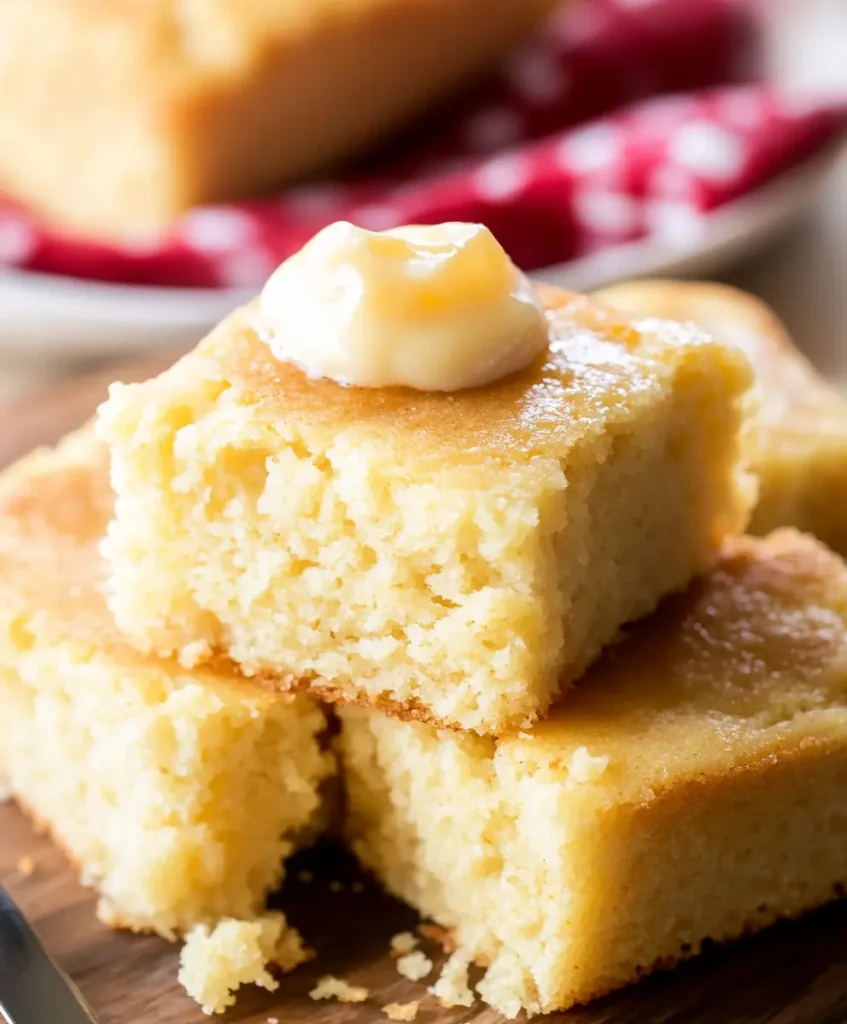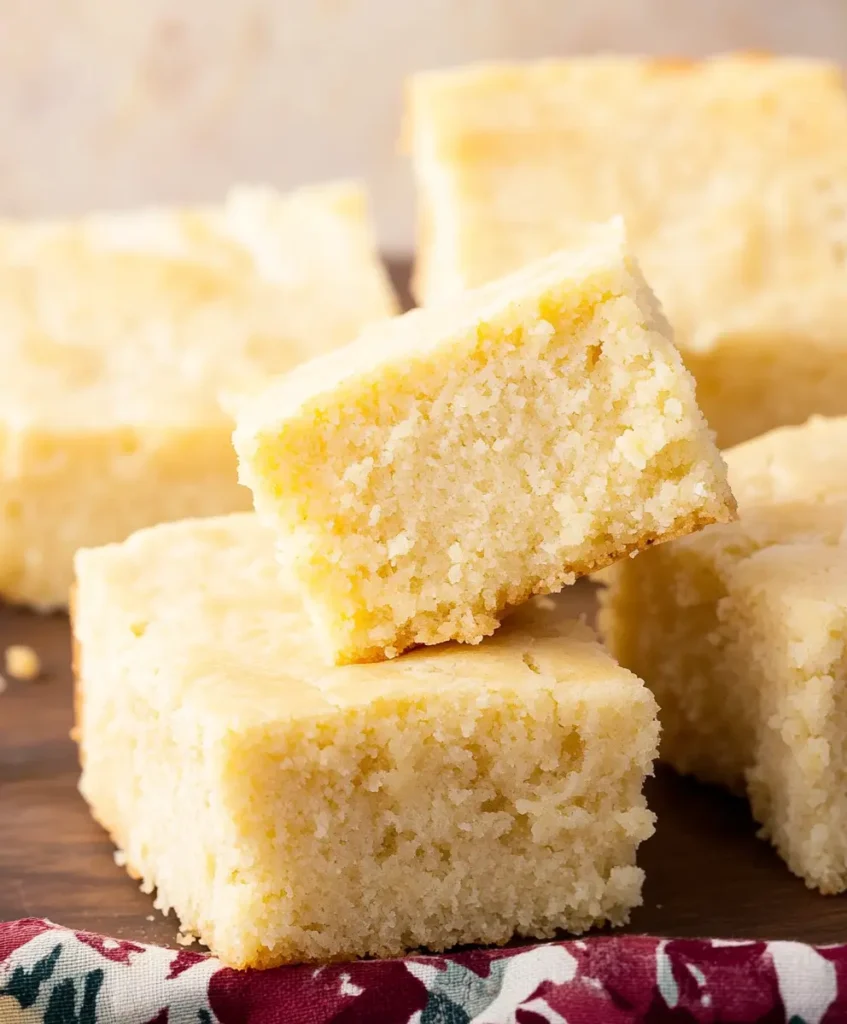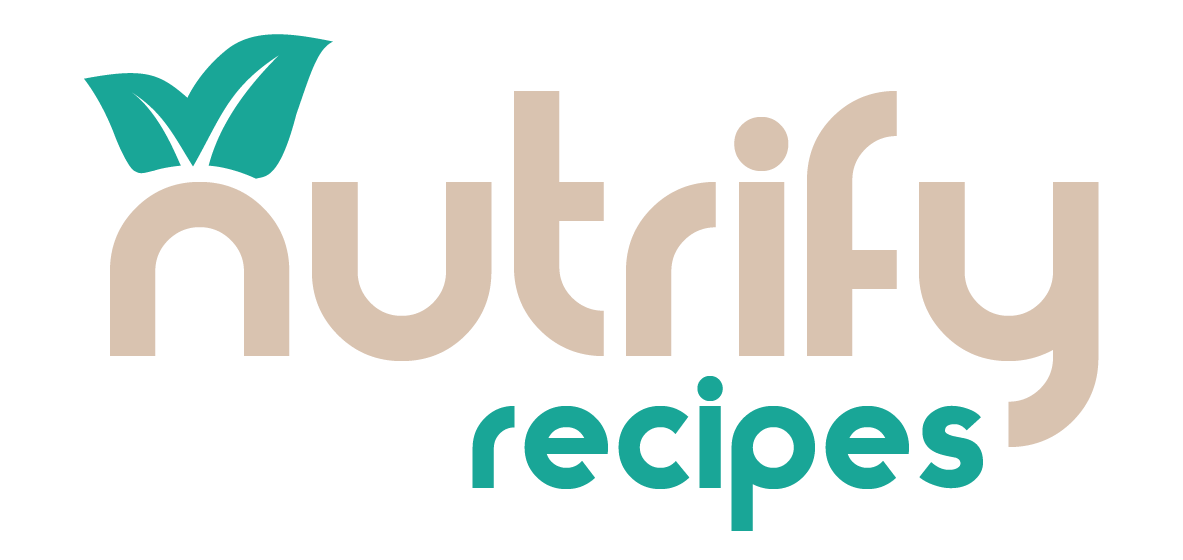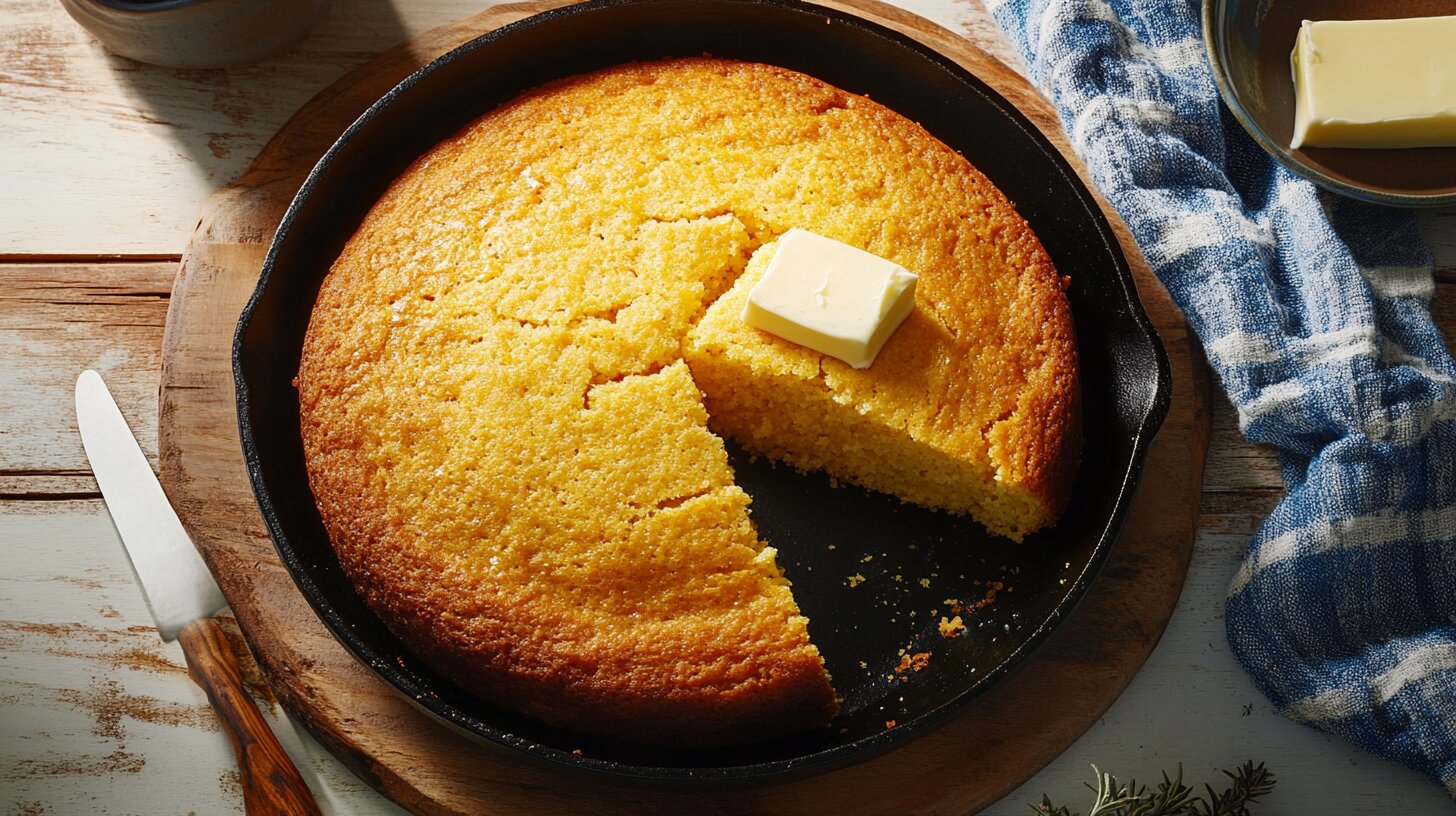Cornbread is a classic part of Southern cooking, loved for its simple and comforting taste. Whether it’s served with chili, barbecue, or enjoyed on its own, cornbread is a dish that brings people together. But there’s one big question that many people still argue about: Should you use buttermilk or regular milk to make cornbread?
This may seem like a small choice, but it can make a big difference in how your cornbread turns out. Buttermilk is known for its tangy flavor and rich texture, while regular milk is more neutral and widely available.
In this article, we’ll look at the history of cornbread, explain what milk and buttermilk do in baking, and compare how each one affects the final dish. By the end, you’ll know which option works best for your recipe, whether you want a traditional taste or something new.
Table of contents
The History of Cornbread
Cornbread has been a staple of American cooking for centuries, with roots tracing back to the indigenous peoples of North America. Native Americans were the first to grind corn into meal, using it to create simple breads baked over open fires. This tradition was later adopted and adapted by European settlers, who added their own ingredients like milk, buttermilk, and eggs to the mix.
Cornbread’s Role in Southern Cuisine
In the Southern United States, cornbread became a fundamental part of daily meals. It was inexpensive to make and used ingredients that were readily available, making it an essential dish for families. Over time, variations emerged, with some regions favoring sweeter cornbreads and others preferring a more savory approach.
One common ingredient that set Southern cornbread apart was buttermilk. Historically, buttermilk was a byproduct of making butter, and its tangy flavor became a signature characteristic of traditional Southern recipes. On the other hand, regular milk was often used in areas where buttermilk wasn’t readily available, leading to a split in cornbread-making methods.
Early Recipes and the Evolution of Ingredients
Early cornbread recipes were simple, often containing just cornmeal, water, and salt. Over time, these recipes evolved to include milk or buttermilk, which improved the texture and flavor. The choice between the two liquids often depended on what was accessible to the cook.
Today, cornbread recipes range from basic to elaborate, incorporating ingredients like cheese, honey, or jalapeños. Despite the modern twists, the debate over whether buttermilk or milk creates the best cornbread continues to this day.
Understanding Milk and Buttermilk
To settle the debate about milk and buttermilk in cornbread, let’s look at what each one adds to the recipe. Both are common in baking, but they have different effects on taste and texture.
What Does Milk Do in Baking?
Milk is a staple ingredient that adds moisture and helps bind the ingredients together. Its creamy texture also creates a soft and tender crumb in baked goods. Whole milk, which has more fat, makes cornbread richer and smoother. Skim and 2% milk work too, but they may result in slightly drier cornbread.
What Makes Buttermilk Unique?
Buttermilk is thicker and tangier than regular milk. It’s slightly acidic, which reacts with baking soda or baking powder to create bubbles. This reaction helps the cornbread rise and gives it a light and fluffy texture. Buttermilk also adds a richer, tangy flavor that’s a hallmark of traditional Southern cornbread.
By understanding how these two ingredients work, you can decide which one fits your recipe better. For a classic taste with extra flavor, choose buttermilk. For a milder flavor or a simpler option, stick with milk.

Why Buttermilk is a Classic Choice
Buttermilk is often considered the gold standard for cornbread due to its acidity and rich flavor. Here’s why:
- Enhances Flavor: Buttermilk adds a subtle tanginess that complements the cornmeal’s sweetness.
- Better Rise & Texture: The acidity in buttermilk reacts with baking soda or baking powder, leading to a lighter, fluffier texture.
- Traditional Southern Style: Many classic Southern recipes, like The Best Southern Cornbread Recipe for Perfect Golden Crust, rely on buttermilk for authenticity.
If you’re following a buttermilk-based recipe, check out The Ultimate Buttermilk Cornbread Recipe for a Perfect Crust for a delicious option.
Taste Test: Buttermilk vs. Milk in Cornbread
To settle the debate between buttermilk and milk, we need to look at how each one performs in the kitchen. A side-by-side comparison of cornbread recipes using both ingredients reveals differences in taste, texture, and overall appeal. Let’s dive into the results of this taste test.
Preparing the Recipes
For this comparison, two identical cornbread recipes were prepared, differing only in the liquid used. Both recipes included standard ingredients like cornmeal, flour, eggs, and baking powder, but one used whole milk while the other featured buttermilk.
Results: Texture
Cornbread made with buttermilk had a slightly denser crumb but felt moist and velvety. The buttermilk’s acidity interacted with the leavening agents, creating a lighter texture overall. In contrast, the milk-based cornbread was softer but less structured, with a looser crumb that tended to crumble more easily.
Results: Flavor
The flavor differences were immediately noticeable. The buttermilk cornbread had a richer, tangy taste that complemented the natural sweetness of the cornmeal. Many testers preferred this traditional flavor, describing it as “bold” and “authentic.” On the other hand, the milk-based cornbread had a milder, more neutral taste. It was pleasant but lacked the depth that buttermilk provided.
Crust and Appearance
Buttermilk cornbread developed a deeper golden crust, thanks to the acidic nature of buttermilk, which enhances browning. The milk cornbread was slightly paler and didn’t achieve the same visually appealing crust.
Overall Winner
While both versions had their strengths, the buttermilk cornbread emerged as the favorite among most testers. Its richer flavor and superior texture made it stand out, particularly for those who enjoy traditional Southern-style cornbread. The milk-based version, however, was still a good option for those who prefer a lighter taste or don’t have buttermilk on hand.
By comparing the two side by side, it’s clear that buttermilk adds an extra layer of flavor and texture that elevates cornbread. However, the best choice ultimately depends on personal preference and the flavor profile you want to achieve.
Which Should You Use? A Case-by-Case Guide
Choosing between buttermilk and milk for cornbread depends on your recipe, the taste you want, and what’s available in your kitchen. Let’s look at when to use each option and how to make adjustments if needed.
When to Choose Milk
Milk is a great choice when you want a simpler or milder flavor. It works well if you’re making cornbread that’s sweet or meant to pair with dishes like soups or stews. Since milk is widely available, it’s also a convenient option if you don’t have buttermilk on hand.
- Flavor: Milk provides a neutral taste, allowing other ingredients to stand out.
- Texture: Cornbread made with milk is light and soft but may be more crumbly.
- Best Use: Choose milk for recipes that call for added sugar or mix-ins like cheese and jalapeños.
When to Choose Buttermilk
Buttermilk is the best choice if you want a more traditional, tangy flavor. It’s especially good for Southern-style cornbread recipes or when you’re aiming for a richer texture.
- Flavor: The tangy taste of buttermilk gives cornbread a bold and savory flavor.
- Texture: Buttermilk makes cornbread moist, dense, and less crumbly.
- Best Use: Use buttermilk for traditional recipes or when serving cornbread as a side dish for chili or barbecue.
Substitutions and Alternatives
If you don’t have buttermilk, you can easily make a substitute:
- Milk and Lemon Juice or Vinegar: Add 1 tablespoon of lemon juice or vinegar to a cup of milk. Let it sit for 5 minutes before using it.
- Yogurt or Sour Cream: Mix equal parts of plain yogurt or sour cream with a little water or milk to thin it out.
These substitutes provide a tangy flavor similar to buttermilk and work well in cornbread recipes.
By choosing the right option for your recipe, you can create cornbread that suits your taste and cooking style. Both milk and buttermilk have their strengths, so don’t be afraid to experiment and find your favorite.

Common Questions About Cornbread Ingredients
When it comes to baking cornbread, there are plenty of questions about ingredients, substitutions, and techniques. Let’s address some of the most frequently asked questions to help you perfect your recipe.
Can You Substitute Milk for Buttermilk in Cornbread?
Yes, you can substitute milk for buttermilk in cornbread, but it will affect the flavor and texture. Buttermilk adds a tangy taste and makes the cornbread moist and dense, while milk provides a lighter, more neutral flavor.
If you want a similar tangy effect, mix 1 tablespoon of vinegar or lemon juice with 1 cup of milk. Let it sit for about 5 minutes before using it as a buttermilk substitute.
Can You Use Non-Dairy Milk in Cornbread?
Absolutely! Non-dairy milk options like almond, soy, or oat milk work well in cornbread. For a tangy flavor, you can add vinegar or lemon juice to the non-dairy milk to mimic buttermilk. Coconut milk is another option, though it may add a slightly sweet and tropical flavor to the bread.
Does Buttermilk Affect Cooking Time?
Buttermilk can slightly change cooking times because of its acidity. The reaction between buttermilk and baking soda or powder helps the cornbread rise faster, so keep an eye on your oven. Check for doneness a few minutes earlier than you would with milk-based cornbread.
What Happens if You Don’t Add Enough Liquid?
If you don’t use enough liquid in your cornbread batter, the bread may turn out dry and crumbly. Make sure to measure accurately and add enough milk or buttermilk to create a smooth, pourable batter. A slightly thicker batter is fine, but it should still be easy to spread in the pan.
Can You Freeze Cornbread?
Yes, cornbread freezes well! Allow it to cool completely, then wrap it tightly in plastic wrap or aluminum foil. Place the wrapped cornbread in a freezer-safe bag or container. It will stay fresh for up to 3 months. To reheat, let it thaw at room temperature and warm it in the oven for a few minutes.
Does the Type of Pan Matter?
The type of pan you use can affect the texture and crust of your cornbread. Cast iron skillets are a favorite for traditional recipes because they create a golden, crispy crust. However, glass or metal baking pans also work well, though they may not give you the same level of crunch on the edges.
Conclusion
The choice between buttermilk and milk in cornbread comes down to personal preference and the type of cornbread you want to make. Buttermilk adds a tangy flavor, rich texture, and a golden crust, making it ideal for traditional Southern-style recipes. On the other hand, milk provides a lighter, milder option that works well in sweeter or simpler cornbreads.
By understanding how these two ingredients affect taste, texture, and appearance, you can tailor your recipe to match your needs. Whether you stick with classic buttermilk or opt for versatile milk, the key to great cornbread lies in experimenting and finding the balance that works best for you.
Remember, there are no hard and fast rules. Both options can yield delicious results, so don’t hesitate to try different variations and make cornbread your own.
Final Thoughts
Whether you choose buttermilk for its tangy depth or milk for its clean simplicity, the choice is yours to make based on preference. Experimenting with both will help you find your ideal cornbread. For more cornbread tips and inspiration, explore Gipfeli Made Easy: How to Bake Soft and Buttery Swiss Croissants for a fun baking challenge.

